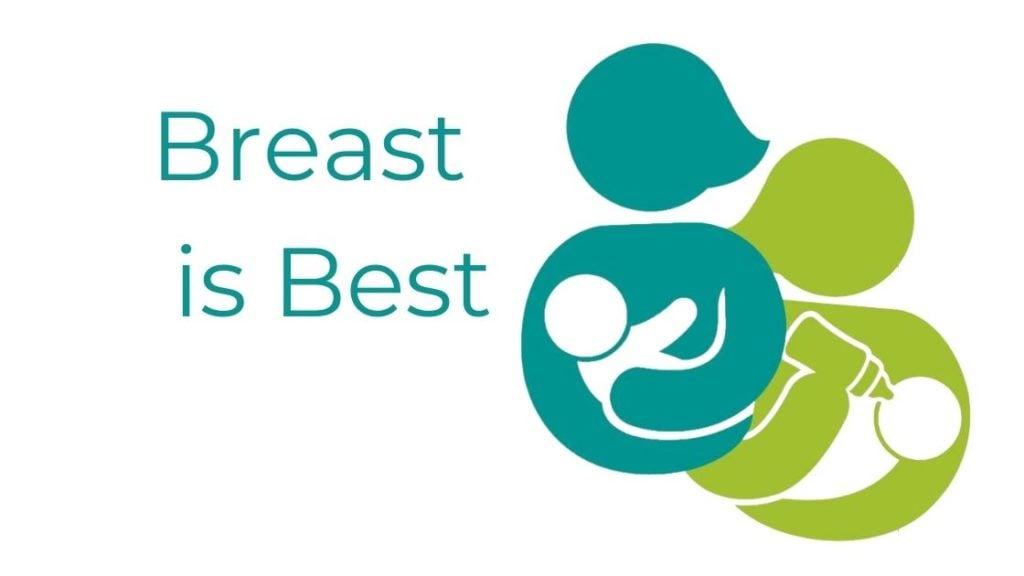“How’s breastfeeding going?” asked the facilitator of my “new mom” class. Eight of us were sitting in a circle with our newborns. Clad in nursing covers to hide the evidence (except for me and one other mother), we were all attempting to breastfeed our babies.
“Breastfeeding challenges are one of the most common things new mothers face,” she said, urging us to ask questions. But no one said anything.
When I was pregnant with my daughter, I barely thought twice about how I would feed her. “Of course I’m going to breastfeed,” I’d answer during my prenatal appointments. “That’s wonderful!” the nurses and midwives would exclaim, smiling approvingly.
Because, “breast is best,” right? Everyone says so—the World Health Organization, Dr. Sears, even Mayor Bloomberg in New York City. It’s natural and it’s free (that is, as “free” as any around-the-clock commitment can be).
“Breastfeeding is an unequalled way of providing ideal food for the healthy growth and development of infants; it is also an integral part of the reproductive process with important implications for the health of mothers,” says the official policy statement of the World Health Organization. So, how could I not breastfeed?
When Lydia was born we got right down to business. Despite her birth via c-section (some evidence suggests that breastfeeding can be more difficult following a c-section), I was optimistic. After we got home from the hospital I continued to nurse my little girl. But our trips to the pediatrician indicated that she wasn’t gaining very much weight.
“Shouldn’t she be gaining more than that?” I asked the doctor.
“Oh, I don’t think there’s a problem,” she said. “Some babies just take longer to add the weight. She’s fine!”
I wasn’t so sure. I went back to my mom-and-baby class and shared my doubts. And on my instructor’s suggestion, I booked an appointment with a different pediatrician for a second opinion.
The new doctor was clearly concerned about Lydia’s weight gain, or lack thereof. She all but ordered me to visit a lactation consultant as soon as possible, and suggested that I consider supplementing Lydia with formula until I had my appointment.
But I didn’t want to supplement. After all, isn’t formula to be avoided at all costs? Wouldn’t my milk supply disappear if I gave Lydia a bottle? Stressed out and feeling like a failure, I scheduled an appointment for the next day.
Weigh in and out
The lactation consultant started by weighing Lydia, and then had me nurse her as usual. Afterward, she weighed Lydia again to find out exactly how much milk she had taken in. It turned out it was something, but not quite enough.
So she introduced me to the supplemental nursing system (SNS)—a bottle attached to a tiny tube that you tape to your nipple so your baby can nurse from you quasi-normally. The idea is to do this instead of offering a bottle, so your baby’s sucking will encourage the production of more milk.
I went back every week for about two months, but it felt like a year. While at home, I followed a set schedule: I’d breastfeed Lydia “normally” every two to three hours, around the clock. Then I’d supplement with formula or breast milk using the SNS. After that, I’d use the industrial breast pump I’d rented from a hospital. All of this was meant to increase my milk supply.
But every week I’d go back and it was the same story—Lydia was never getting quite enough. I wanted desperately to “succeed,” however, so I kept at it, taping on the tube, strapping on the breast pump, cleaning all the accoutrements, taking herbs, and eating “lactation cookies.”
But it just never worked like it was supposed to. I was getting depressed and increasingly myopic. My fitness to be a mother seemed deeply connected to my ability—or lack thereof—to successfully feed my daughter. My husband could tell I was going nuts.
“You know, you’ve been breastfeeding Lydia for a long time—lots of women would have stopped by now,” he said. “She’s going to be fine if we switch her to formula…maybe we should just give her a bottle?”
And so we did—and it was fine. I gave up, but it was okay. And actually, I didn’t really give up. I kept breastfeeding her in the months that followed, but when she needed a bit more milk we just gave her a few ounces in a bottle. I returned the pump, put the SNS back on the shelf, and gave away the herbs. It seems like the addition of supplements in a bottle—either breast milk or (usually) formula—is what caused Lydia to finally start gaining weight normally. I felt like such a failure when we starting, because everything I heard/read said that if I just kept breastfeeding with commitment, I would surely produce enough milk. In fact, that’s basically what the WHO guidelines state. But it never happened.
Lydia is normal now in terms of weight and height—and that’s the most important thing of all.
Resources
Kelly Mom Evidence-based information about breastfeeding and parenting. kellymom.com
Fearless Formula Feeder Support and information for parents who use formula. fearlessformulafeeder.com
Abbott Northwestern Infant Feeding Program tinyurl.com/c6fhgs5 612-863-4638
World Health Organization tinyurl.com/8f6das
Dr. Sears Questions about pediatrics and more, answered on the site askdrsears.com
Supplemental Nursing System Ideal for long-term supplemental feedings at the breast tinyurl.com/7q64vd5
Shannon Keough lives in Minneapolis with her husband, Nick, and daughter, Lydia.

















